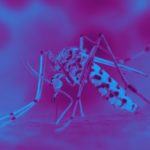Link to Pubmed [PMID] – 23968494
Malar. J. 2013 Aug;12:291
BACKGROUND: Current vector control strategies focus largely on indoor measures, such as long-lasting insecticide treated nets (LLINs) and indoor residual spraying (IRS); however mosquitoes frequently feed on sugar sources outdoors, inviting the possibility of novel control strategies. Attractive toxic sugar baits (ATSB), either sprayed on vegetation or provided in outdoor bait stations, have been shown to significantly reduce mosquito densities in these settings.
METHODS: Simple models of mosquito sugar-feeding behaviour were fitted to data from an ATSB field trial in Mali and used to estimate sugar-feeding rates and the potential of ATSB to control mosquito populations. The model and fitted parameters were then incorporated into a larger integrated vector management (IVM) model to assess the potential contribution of ATSB to future IVM programmes.
RESULTS: In the Mali experimental setting, the model suggests that about half of female mosquitoes fed on ATSB solution per day, dying within several hours of ingesting the toxin. Using a model incorporating the number of gonotrophic cycles completed by female mosquitoes, a higher sugar-feeding rate was estimated for younger mosquitoes than for older mosquitoes. Extending this model to incorporate other vector control interventions suggests that an IVM programme based on both ATSB and LLINs may substantially reduce mosquito density and survival rates in this setting, thereby substantially reducing parasite transmission. This is predicted to exceed the impact of LLINs in combination with IRS provided ATSB feeding rates are 50% or more of Mali experimental levels. In addition, ATSB is predicted to be particularly effective against Anopheles arabiensis, which is relatively exophilic and therefore less affected by IRS and LLINs.
CONCLUSIONS: These results suggest that high coverage with a combination of LLINs and ATSB could result in substantial reductions in malaria transmission in this setting. Further field studies of ATSB in other settings are needed to assess the potential of ATSB as a component in future IVM malaria control strategies.

